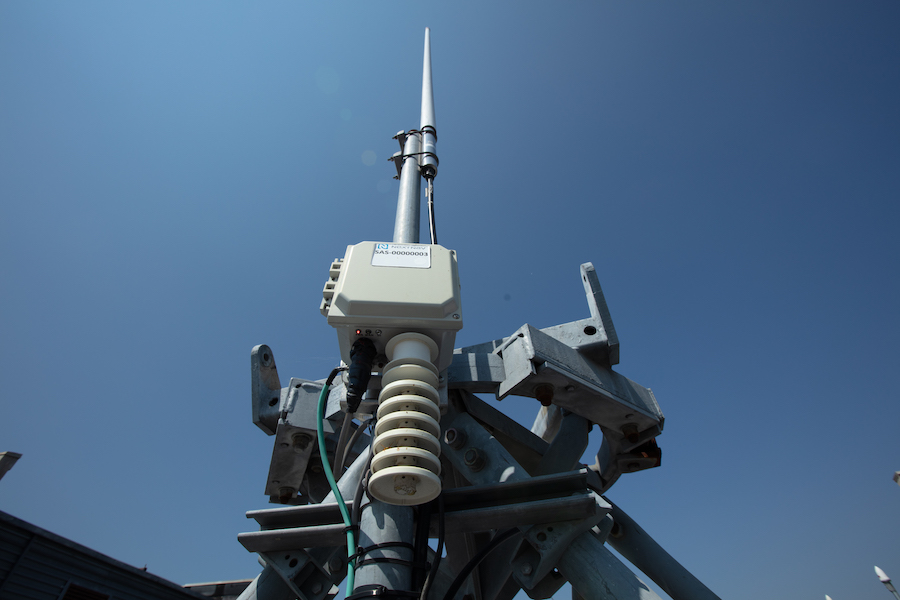Though widely used, GNSS is vulnerable, with the possibility of a widespread outage posing a major economic threat. Developing alternatives is critical, with such technologies the focus of a new report from the European Union’s Joint Research Centre (JRC).
The report outlines its trials of Alternative Position, Navigation and Timing (A-PNT) technologies, conducted between 2021 and 2022, according to a news release. The demonstration tested technologies from seven companies on their ability to address vulnerabilities and serve as a complement to GNSS.
The JRC recognized NextNav’s TerraPoiNT as a mature solution that meets or exceeds all relevant benchmarks to serve as a resilient layer to existing GNSS technology. It offers both horizontal and vertical location services while remaining commercially deployable and cost-effective for end-users. Previous tests by the U.S. Department of Transportation (DOT) found TerraPoiNT to be the only commercial PNT alternative to meet identified needs in “all applicable use case scenarios.”
Executed on behalf of the European Commission’s Directorate-General for Defense Industry and Space (DEFIS), the JRC report was based on rigorous testing and data analysis. The report identifies alternative solutions and serves as a guide for policymakers as they look to select and implement these technologies, ultimately strengthening the resilience of the European Union’s economy and critical infrastructure.
The need for an alternative
Critical infrastructure and industries rely on precise PNT services, but traditional GNSS is vulnerable to interference such as jamming and spoofing attacks, solar flares and direct strikes on satellites. In Ukraine, European commercial aircraft have reported jamming disruptions to their satellite navigation systems. A widespread outage “would impact financial transactions, mobile networks, power grids, transportation infrastructure, and more, with disastrous economic and national security consequences,” according to the release.
“With this report, the European Union is taking an important step for security and economic resilience by working to address GNSS vulnerabilities,” said Ganesh Pattabiraman, Co-Founder and CEO of NextNav. “We’re proud that the JRC confirmed TerraPoiNT’s exceptional performance and its ability to fulfill today’s PNT needs. As European policymakers look ahead to the upcoming European Radionavigation plan and develop their infrastructure priorities, we encourage them to use these findings as a lodestar to act quickly before facing the serious consequences of a GNSS outage.”
TerraPoiNT Findings
TerraPoiNT demonstrated indoor positioning, timing and navigation, including vertical location accuracy within 2 meters 90% of the time, throughout the entire test, according to the report. It was also only one of three technologies to successfully demonstrate timing stability over multiple days of GNSS loss. Overall, it exceeded critical infrastructure requirements by maintaining timing stability within 15 nanoseconds 90% of the time.
TerraPoiNT has signals that are 100,000x stronger than traditional GNSS, making them more resistant to spoofing and jamming. The service also can support methods to authenticate and encrypt signals to counter hostile attacks and other types of interference. It can receive timing through multiple sources, including atomic clocks and fiber networks, and transfer it wirelessly over the air across large distances. TerraPoiNT also delivers similar or better levels of outdoor PNT performance as it does indoor, allowing for 3D navigation capabilities that incorporate both horizontal and vertical location.
The service is currently used by NASA for drone and urban mobility testing in Langley, Virginia and in Mountain View, California, leveraging NextNav’s deployed network.
TerraPoiNT operates in the 900 MHz band in the United States and the 800 MHz band in Japan. In the U.S., TerraPoiNT technology operates in a band geared toward terrestrial multilateration, specifically in the 920 MHz band. The JRC recommends that spectrum be allocated for terrestrial PNT resilience within the EU.
Because of its ability to fit mass market devices with software and firm upgrades, leveraging existing RF front end where possible, and the minimal spectrum required for operation, the service is deployable at scale. With its subsidiary NextNav France, which has been working with the European Innovation Council, NextNav is incorporating enhancements to its TerraPoiNT system to leverage LTE/5G signals, allowing for PNT implementation ahead of spectrum allocation.






